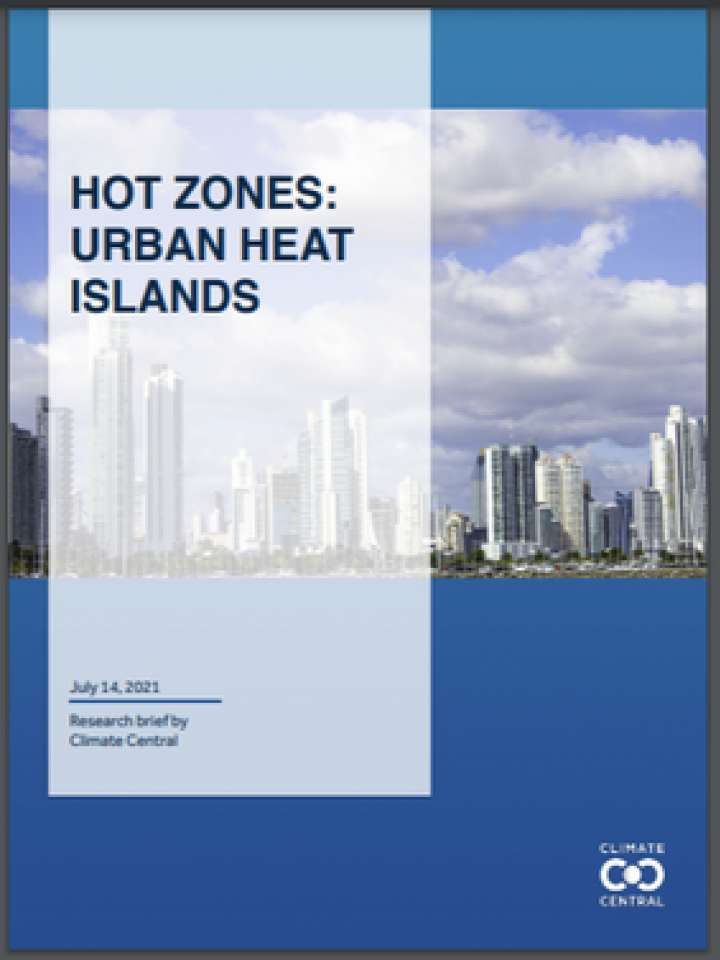Hot zones: urban heat islands
This report will look at the factors that contribute to the heat island effect. Urban heat islands are metropolitan places that are hotter than their outlying areas, with the impacts felt most during summer months. About 85% of the U.S. population lives in metropolitan areas. Paved roads, parking lots, and buildings absorb and retain heat during the day and radiate that heat back into the surrounding air. Neighborhoods in a highly-developed city can experience mid-afternoon temperatures that are 15°F to 20°F hotter than nearby tree-lined communities or rural areas with fewer people and buildings.
Climate Central created an index to evaluate the intensity of urban heat islands (UHI) and applied it to 159 cities in the U.S. The cities with the five highest scores are New Orleans, Newark, N.J., New York City, Houston and San Francisco. Yet each city has its own unique layout, showing that the overall heat island effect is composed of different elements in each city. Cities in the Midwest and Northeast, such as New York, Newark, Boston, Chicago, Providence, Detroit and Cleveland have more compact, historically built-out environments, with taller buildings. These factors add to the intensity of their urban heat island footprint. Cities like Houston and Fresno, Calif., scored higher due to the large percentage of impermeable surfaces that make up their city’s topography.
Explore further
